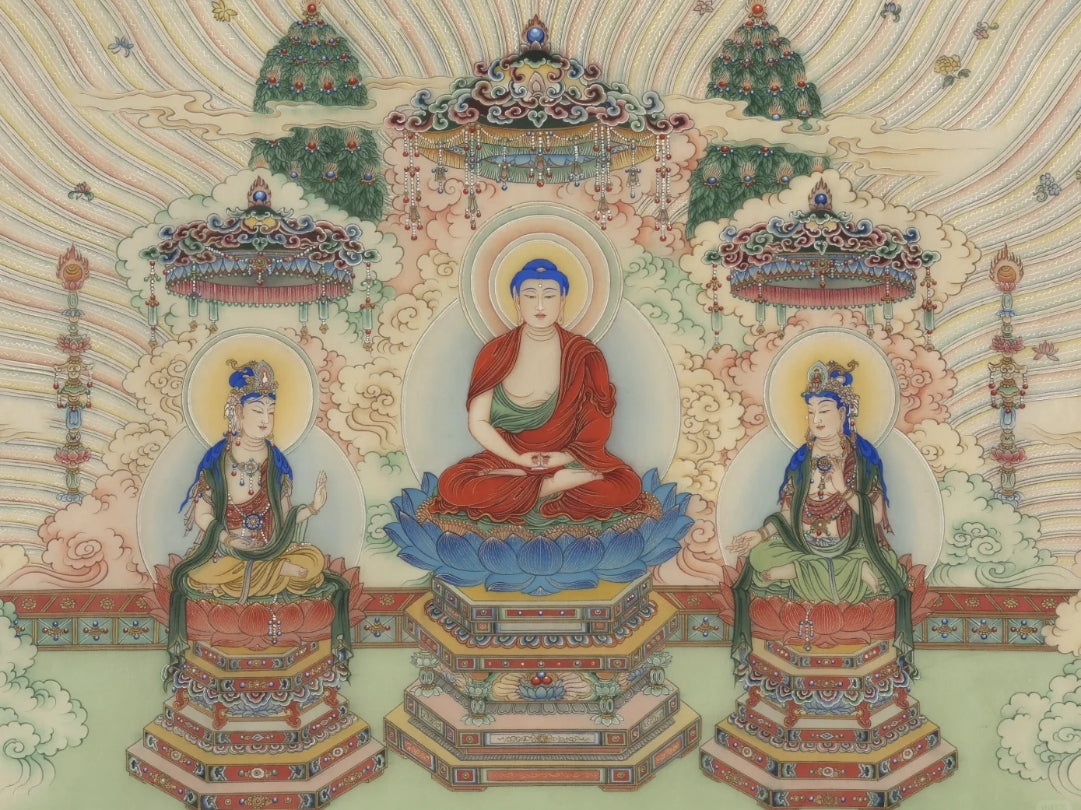Numbers carry weight. In many Buddhist traditions certain counts—108, 27, 7, 3—are woven into practice, ritual, and daily life. When artisans translate those traditions into jewelry, the choice of beads and strand lengths does more than look good: it can become a wearable prompt for mindfulness, devotion, or intention. This article walks through the meaning behind common sacred counts, how jewelry makers use them (malas, bracelets, layered necklaces), and practical tips for choosing a piece that fits your purpose—prayer, memory, or style.

Why numbers matter in Buddhist practice
Numbers function as mnemonic anchors and symbolic maps. In Buddhist contexts, they help organize practice, encode doctrinal ideas, and make the immaterial more tangible.
-
108 — Often used for malas (prayer necklaces), 108 is a composite number with multiple traditional explanations: the 108 defilements, the 108 worldly concerns, or astronomical/astrological links. Counting 108 mantras is a full, rhythmical practice; it gives structure to extended recitation.
-
27 — A quarter of 108, 27 is frequently used for travel malas or bracelet-malas that are more portable. In some astrological systems 27 relates to lunar mansions or stages, lending a cosmic resonance.
-
7 — A small, approachable number found in counting practices, circumambulation rituals, or short daily dedications. Seven can represent completeness or points of protection in a compact format.
-
3 — Symbolizes the Three Jewels (Buddha, Dharma, Sangha) and serves as a distilled reminder of refuge and commitment; rings or trios of beads often use this number.
These symbolic meanings are not monolithic—different lineages and cultures offer different explanations—but the common thread is that number + practice = memory + meaning.
How artisans translate sacred counts into jewelry
Designers and makers make deliberate choices to balance ritual function, wearability, and durability.
Full malas (108 beads)
-
Function: Full malas are intended for counting mantras, breath cycles, or prostrations. They are longest and often made from stronger stringing materials to withstand regular handling.
-
Design choices: Many 108 malas include a larger “guru” bead and an accent marker every 27 beads to help the practitioner keep place. Materials can range from bodhi seeds and sandalwood to turquoise or lapis. Knotting between beads is common—it increases durability and gives a rhythmic feel when moving the beads.
-
When to choose: If you plan to use a bead necklace for extended chanting or regular meditation sessions, a 108 mala is the traditional choice.
Quarter malas and bracelet malas (27, 21, 18)
-
Function: These formats are portable and socially flexible. A 27-bead mala often works as a necklace or doubled as a bracelet. Smaller prayer cycles or shorter dedications fit these counts well.
-
Design choices: Makers often place a small guru bead or metal spacer and may use elastic for bracelets or adjustable cord for necklaces. They’re popular for people who want a functional practice tool that’s also discreet.
-
When to choose: For travel, daily on-the-go practice, or as a subtle reminder in public settings.
Small counts and symbolic sets (7, 3, 9)
-
Function: Short counts are suited for quick, repeated intentions—morning dedications, short protective recitations, or as helpfully sized children’s practice beads.
-
Design choices: These are frequently made into stackable bracelets or layered necklaces; simplicity keeps them safe and wearable.
-
When to choose: If you want a low-barrier practice habit or a jewelry piece that can be worn in informal social contexts.
Practical guidance: prayer tool vs. fashion accessory
Not all bead strings are created for the same purpose. Use this quick checklist to choose intentionally.
-
If you want it for prayer or meditation:
• Choose 108 or 27 with a defined guru bead and durable stringing (knotting preferred).
• Pick materials that support practice—bodhi seeds, sandalwood, or meaningful gemstones.
• Learn a short practice to pair with the beads so the object is more than ornament. -
If you want it for symbolism and everyday wear:
• A 7- or 9-bead bracelet or a small 27-bead necklace can be enough to anchor intention without signaling a dedicated practice.
• Consider protective construction: secure clasps, breakaway features for safety, and materials that handle skin contact.
• Treat the object with basic respect: keep it clean, avoid tossing it on the floor, and store it separately from costume jewelry. -
If you want both:
• Look for hybrid designs—subtle 27-bead necklaces with a removable guru bead or enclosed gawu-style pendants that hold a micro-mala inside. These allow private practice while staying discreet in public.
Ritual and etiquette notes for wearing sacred-count jewelry
If a bead strand carries religious text or is designed for formal recitation, a few respectful habits help maintain its integrity:
-
Avoid wearing prayer beads in places where they may be treated casually (e.g., the restroom).
-
Keep the mala clean—natural materials can be gently wiped with a dry cloth; avoid harsh chemicals.
-
If you borrow or receive a mala as a gift, consider a brief dedication or personal intention-setting ceremony before daily use.
These practices are simple and adaptable; the point is not perfection but mindfulness.
Caring for counted pieces
A little maintenance prolongs both function and sentiment:
-
Storage: soft pouch, flat box, or a dedicated altar drawer.
-
Cleaning: dry brush for dust; a soft cloth for silver or gemstones; avoid soaking porous beads.
-
Repairs: restrung malas last longer; ask a maker to knot or restring if you feel uneven tension or fraying.

Final thought: let the number serve the intention
Numbers like 108, 27, 7, and 3 are cultural tools—ways to shape attention. In jewelry they become gentle anchors you can carry. Whether you choose a full mala for formal practice or a 7-bead bracelet as a daily reminder, let the count support what you want to cultivate: presence, compassion, healing, or ethical livelihood. The number is the scaffold; your intention is what gives it life.






